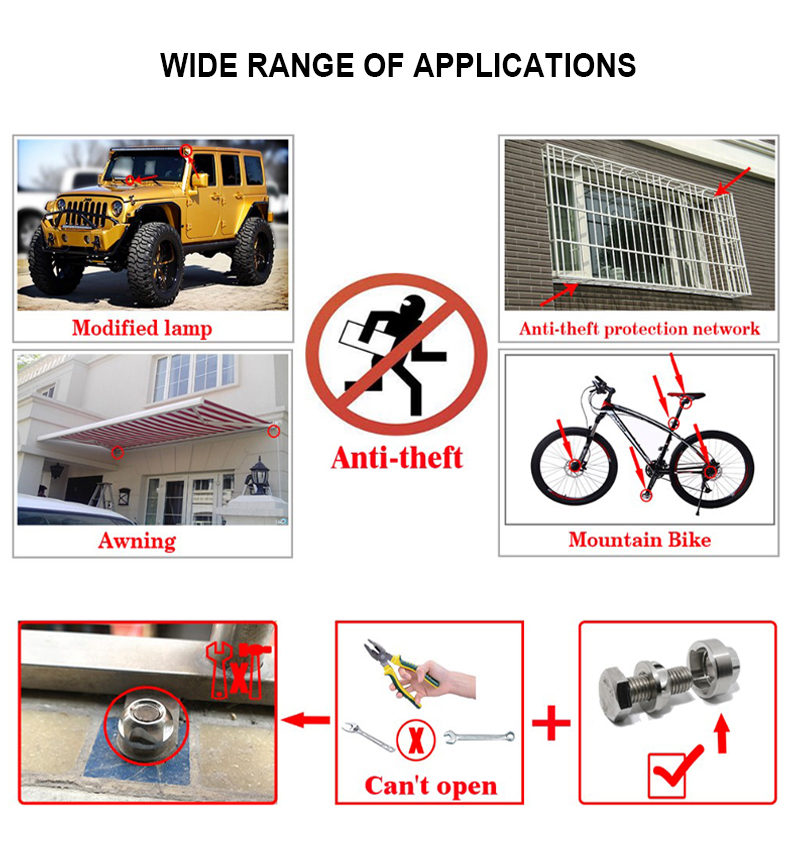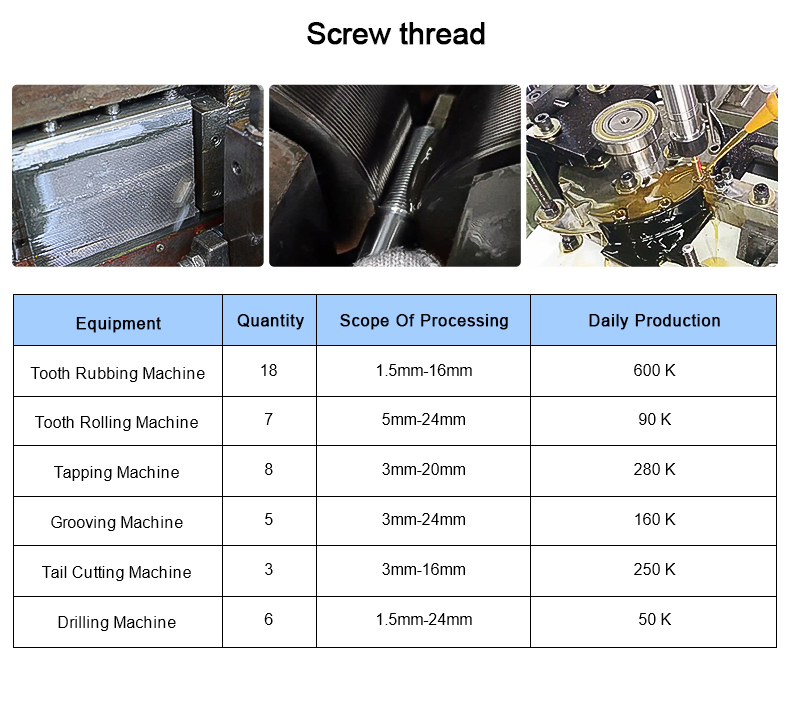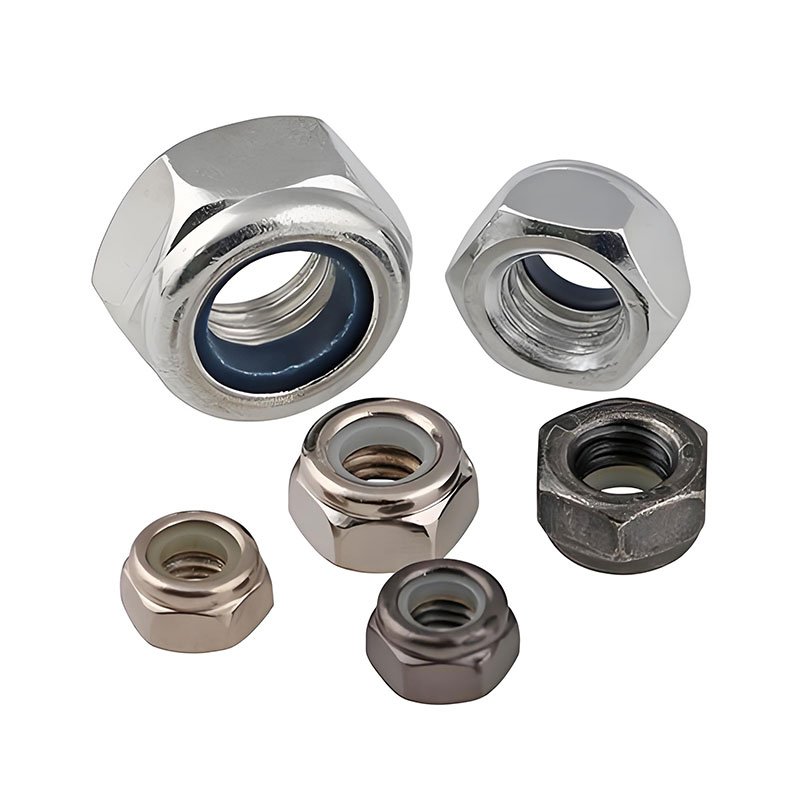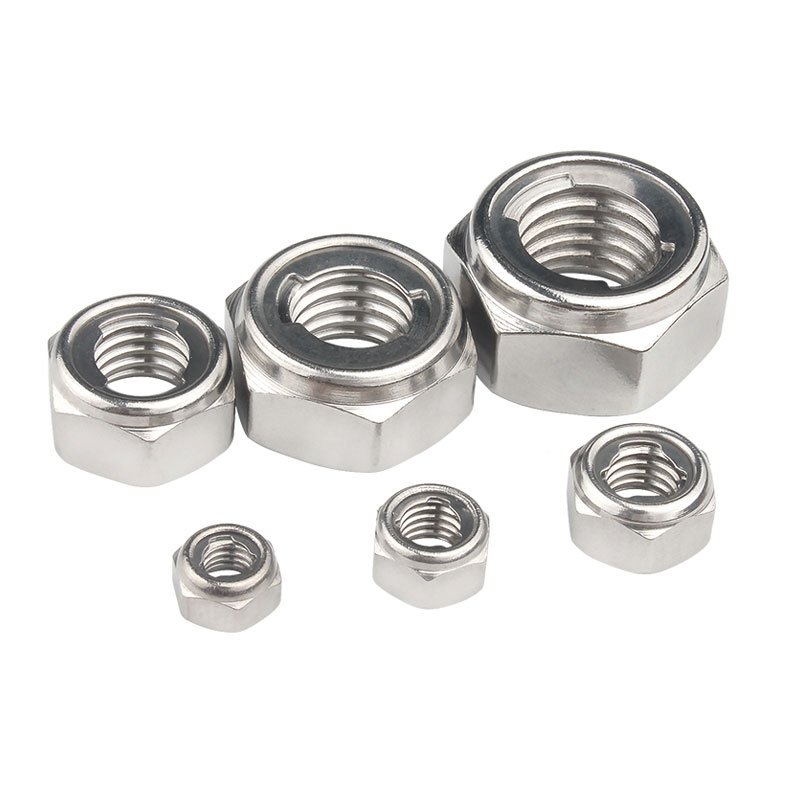



يعتمد تثبيت البراغي والصواميل وفتحها على تصميم غير قياسي، ومطابقة
تُستخدم أدوات غير قياسية لحل مشاكل الفتح والتثبيت. وبصفة عامة، فإن
لا يمكن إدخال مفاتيح الربط. في تصميم مظهر الصواميل والبراغي، الشقوق غير القياسية,
أدوات فتح أو خماسية أو خماسية أو سباعية أو تساعية الزوايا أو أدوات الأخدود المقابلة المصنوعة حسب الطلب
لعبت تأثيرًا جيدًا جدًا في مكافحة السرقة

عملية الرأس على البارد هي واحدة من العمليات الجديدة للتشغيل الآلي بالضغط ذات القطع الأقل أو بدون قطع
إنها طريقة معالجة تستخدم التشوه اللدن للمعدن تحت تأثير
قوى خارجية، وبمساعدة القوالب، تقوم بإعادة توزيع ونقل حجم المعدن لتشكيل
الأجزاء أو الفراغات المطلوبة. عملية الخراطة على البارد هي الأكثر ملاءمة لإنتاج الأجزاء القياسية
أدوات التثبيت مثل البراغي والبراغي والصواميل والمسامير والمسامير والدبابيس وغيرها


A القفل صامولة هو صامولة متخصصة مصممة لمنع الارتخاء من الاهتزاز أو عزم الدوران أو القوى الميكانيكية الأخرى التي قد تتسبب في فك الصامولة القياسية. إنه مكون مهم في الصناعات والتطبيقات التي يكون فيها التثبيت الآمن ضروريًا، خاصة في البيئات عالية الاهتزاز.
أنواع صواميل القفل:
-
صامولة قفل إدراج النايلون (صامولة نايلوك):
- يتميز بملحق نايلون يمسك بالمسمار أو البرغي، مما يوفر الاحتكاك ويمنع الارتخاء.
- يشيع استخدامها في تطبيقات السيارات والفضاء والآلات العامة.
-
صامولة قفل معدنية بالكامل:
- مصنوعة بالكامل من المعدن، وتستخدم صواميل القفل هذه تشوه المعدن لخلق احتكاك مع سنون التثبيت.
- معروفة بمتانتها وقدرتها على تحمل درجات الحرارة العالية والبيئات القاسية.
-
صامولة قفل الشفة المسننة:
- مزودة بشفة ذات حواف مسننة تعض على المادة أو سطح الصامولة لزيادة مقاومة الفك.
- غالبًا ما تستخدم في التطبيقات التي تتطلب عزم دوران أعلى أو عندما تحتاج إلى تثبيت أداة التثبيت في مواد أكثر ليونة مثل البلاستيك أو الألومنيوم.
-
صامولة قفل عزم الدوران السائدة:
- يطبق هذا التصميم ضغطًا ثابتًا على البرغي من خلال ميزات داخلية (مثل الجزء المجعد من الصامولة).
- تُستخدم في التطبيقات التي تحتاج فيها الصامولة إلى أن تكون محكمة ولكن قد تحتاج إلى الشد أو التعديل عدة مرات دون إتلاف اللولب.
المواد:
- الفولاذ: الأكثر شيوعاً، وتوفر القوة والفعالية من حيث التكلفة. يمكن معالجتها أو طلاؤها لمقاومة التآكل (مثل الطلاء بالزنك).
- الفولاذ المقاوم للصدأ: للاستخدام في البيئات المسببة للتآكل، مما يوفر مقاومة أعلى للصدأ والتآكل.
- نحاس أو ألومنيوم: للتطبيقات التي تتطلب مواد خفيفة الوزن ذات مقاومة جيدة للتآكل.
التطبيقات:
- السيارات: في المحركات، وأجهزة التعليق، والأجزاء الأخرى المعرضة للاهتزاز وعزم الدوران العالي، مثل صواميل العجلات وأعمدة الإدارة.
- معدات صناعية: تُستخدم لتأمين الأجزاء في الماكينات، مما يمنع ارتخاءها في المناطق المعرضة للحركة والاهتزاز المستمر.
- الطيران والفضاء: في مكونات الطائرات والفضاء الجوي لضمان بقاء أدوات التثبيت في مكانها بإحكام أثناء الطيران عالي السرعة والظروف القاسية.
- الإنشاءات: للتثبيت للخدمة الشاقة في المكونات الهيكلية أو الآلات المعرضة للاهتزازات.
المزايا:
- يمنع الارتخاء: يوفر تثبيتًا موثوقًا وآمنًا، مما يمنع التفكيك العرضي بسبب الاهتزاز أو الحركة.
- متين وقوي: مصنوعة من مواد قوية يمكنها تحمل الضغط الشديد وعزم الدوران العالي والاهتزاز.
- إعادة الاستخدام: يمكن إعادة استخدام العديد من صواميل القفل، خاصةً أنواع صواميل النايلون، عدة مرات دون أن تفقد قدرتها على القفل.
- حل فعال من حيث التكلفة: يقلل من الحاجة إلى آليات قفل أكثر تكلفة ومتخصصة.
- تعدد الاستخدامات: متوفرة بأحجام ومواد وأنواع خيوط مختلفة لتناسب مختلف التطبيقات والبيئات.
الاعتبارات:
- حساسية درجة الحرارة: قد تتحلل صواميل القفل المصنوعة من النايلون أو تفقد فعاليتها في درجات الحرارة العالية جدًا (أعلى من 250 درجة مئوية)، لذلك قد تكون هناك حاجة إلى بدائل مثل صواميل القفل المعدنية بالكامل في الظروف القاسية.
- قيود المساحة: يمكن أن تكون بعض تصاميم صواميل القفل، مثل النوع المعدني بالكامل، أكثر إحكاما، ولكن البعض الآخر مثل نوع إدراج النايلون قد يتطلب مساحة أكبر.







المراجعات
لا توجد مراجعات بعد.